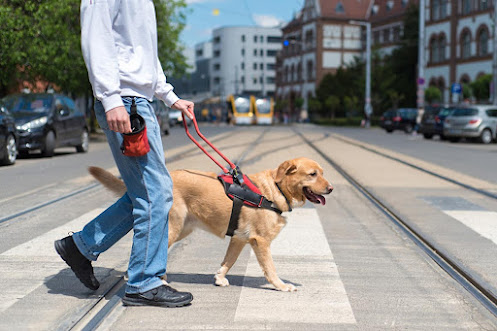Unsung Heroes: The Vital Role of Service Dogs in Enhancing Lives
Service dogs are more than just faithful companions; they are highly trained, dedicated partners that play a crucial role in enhancing the lives of individuals with disabilities. From guiding the visually impaired to providing emotional support to those with mental health conditions, service dogs empower their handlers to navigate the world with confidence, independence, and dignity. In this article, we will explore the invaluable contributions of service dogs and the profound impact they have on the lives of their handlers.
Types of Service Dogs:
Service dogs are trained to perform specific tasks to assist individuals with disabilities, including physical, sensory, psychiatric, and medical conditions. Some common types of service dogs include:
1. Guide Dogs: Guide dogs, also known as seeing-eye dogs, assist individuals who are blind or visually impaired by navigating obstacles, safely crossing streets, and providing guidance and support in various environments.
2. Hearing Dogs: Hearing dogs are trained to alert individuals who are deaf or hard of hearing to important sounds, such as doorbells, alarms, and approaching vehicles, enhancing their awareness and safety.
3. Mobility Assistance Dogs: Mobility assistance dogs aid individuals with mobility impairments by retrieving objects, opening doors, turning on lights, and providing stability and balance assistance while walking or standing.
4. Psychiatric Service Dogs: Psychiatric service dogs support individuals with psychiatric disabilities, such as post-traumatic stress disorder (PTSD), anxiety disorders, and depression, by providing emotional support, interrupting panic attacks, and performing grounding techniques to alleviate symptoms.
5. Medical Alert Dogs: Medical alert dogs are trained to detect changes in their handler's health, such as fluctuations in blood sugar levels in individuals with diabetes or impending seizures in individuals with epilepsy, and alert them or others to take appropriate action.
Training and Certification:
Service dogs undergo rigorous training to learn specialized tasks tailored to their handler's specific needs and requirements. Training typically begins at a young age and involves obedience training, task training, socialization, and exposure to various environments and stimuli. Once trained, service dogs must demonstrate proficiency in performing their tasks reliably and safely before being matched with a handler.
While there is no official certification or registry for service dogs in the United States, many reputable training organizations adhere to industry standards and best practices established by organizations such as Assistance Dogs International (ADI) and the International Association of Assistance Dog Partners (IAADP). Upon completion of training, service dogs may receive identification, such as vests or tags, indicating their status as working animals.
Legal Rights and Access:
Under the Americans with Disabilities Act (ADA), individuals with disabilities have the right to be accompanied by their service dogs in public places, including businesses, restaurants, and transportation facilities. Service dogs are granted access rights to accompany their handlers wherever they go, including areas where pets are typically prohibited. Businesses and establishments are required to accommodate service dogs and their handlers, provided the dog is under control and does not pose a direct threat to the health or safety of others.
Challenges and Misconceptions:
Despite the invaluable assistance they provide, service dogs and their handlers may encounter challenges and misconceptions in public settings. Some common challenges include:
1. Access Denial: Service dogs and their handlers may face access denial or discrimination from individuals or businesses unfamiliar with the laws and regulations regarding service animals.
2. Distraction and Interference: Service dogs must remain focused on their tasks at all times, but distractions from well-meaning strangers, other animals, or environmental stimuli can disrupt their concentration and effectiveness.
3. Misuse of Service Dog Designation: Some individuals may misrepresent their pets as service animals to gain access to public places or accommodations, leading to skepticism and skepticism and undermining the legitimacy of legitimate service dog teams.
It is essential for the public to understand and respect the rights of service dogs and their handlers and to refrain from interfering with their work or questioning their need for assistance.
Impact on Quality of Life:
For individuals with disabilities, service dogs are much more than trained assistants; they are invaluable companions, confidants, and lifelines that provide unwavering support, independence, and companionship. Service dogs not only assist with practical tasks but also offer emotional comfort, companionship, and a sense of security and empowerment to their handlers, enabling them to live fuller, more fulfilling lives.
In Conclusion:
Service dogs play a vital role in enhancing the lives of individuals with disabilities, providing assistance, independence, and companionship that extends far beyond their trained tasks. Through their unwavering dedication, loyalty, and service, these remarkable animals demonstrate the profound impact that the human-animal bond can have on our lives and communities. It is crucial to recognize, respect, and support the rights of service dogs and their handlers, ensuring they can access the accommodations and opportunities they need to thrive.
